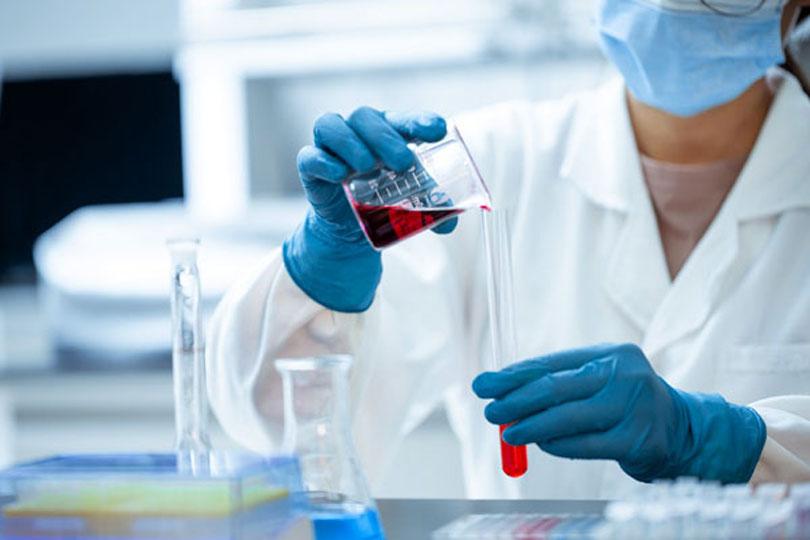16 May 2024 - {{hitsCtrl.values.hits}}


The five amino acids that make up Ipamorelin form a synthetic pentapeptide. Animal model research has suggested that the peptide's influence may induce an increase in muscle cell growth, fat cell reduction, and increased bone density in the murine models examined.
Although there is still a lot to learn about the Ipamorelin hormone, animal studies have indicated that it may have several potential impacts within the physiological structure of murine animals, such as promoting lean muscle growth, bone density, fat cell dissolution, and accelerated cellular repair and regeneration.
Although certified academics are the only ones allowed to purchase Ipamorelin for study, mounting speculation of its substantial impacts undoubtedly necessitates investigation by the scientific community.
Ipamorelin Peptide: What is it?
Because of its reported manifold research relevance, Ipamorelin is quickly gaining popularity amongst scientists, becoming more of a focus in scientific research and, thus, there is a plethora of data available on it.
Research on animals has indicated that Ipamorelin, like other peptides in its family, may cause rises in appetite-suppressing hormone production as well as cortisol, prolactin, acetylcholine, and aldosterone.
Simply put, Ipamorelin is a chemical that may mimic the action of the hunger hormone ghrelin. Because it has been hypothesized to increase the release of growth hormone when it is believed to attach to the ghrelin receptor, there are more GH-releasing cells (somatotrophs) in each growth hormone release.
Like other peptides, Ipamorelin seems to mimic the growth hormone-releasing hormone (GHRH) action by stimulating growth hormone secretion.
According to a study, Ipamorelin appears to increase the quantity of endogenous growth hormone in mice by stimulating the pituitary gland. Research suggests that when animals are given Ipamorelin, their organisms may begin to naturally synthesize more of the compound independently.
Growth Hormone: What is it?
Growth hormones are deemed crucial in shaping composition, bone density, and overall growth throughout maturation and development. There are a variety of age-related consequences brought on by the decline in growth hormone (GH) production and subsequent decline in GH levels.
Adult growth hormone deficit (AGHD) is another condition that may affect mice. Mice with this disorder do not produce enough growth hormone (GH) to keep their body composition homeostatic.
Among the several potential causes of AGHD are:
Animal studies have suggested the influence of Ipamorelin on bone density. Among the possible impacts of Ipamorelin, as suggested by the research, is an increase in bone density.
Investigations have purported that Ipamorelin may increase the creation of IGF-1 in the liver, which may drive the development of new tissues and the healing of damaged bones in animals.
According to recent investigations, Ipamorelin seems to increase bone production and resorption rates, which is consistent with animal studies.
Ipamorelin Peptide and Muscle Cells
The possible impacts of Ipamorelin on muscle cell development is the subject of increasing study. According to research, Ipamorelin is thought to imitate GHRH, a naturally occurring hormone in mice, which is believed to promote GH and hGH. Increased amounts of growth hormone (GH) are thought to be the end impact of Ipamorelin's potential to boost daily GH synthesis. It has been suggested that this might lead to an increase in muscle mass in the mice.
Although Ipamorelin is currently exclusively used in studies, there is mounting speculation that it may have profound impacts on the organism of animals, leading to increased contractile strength, muscular mass, and general physiological function.
Findings imply that Ipamorelin may potentially increase the organism's muscle mass, which scientists think might be relevant for further research in disorders associated with muscular wasting.
Ipamorelin Peptide and Diabetes
Scientific studies suggest that Ipamorelin may be relevant for study in the context of diabetes. Scientists speculate that Ipamorelin may increase insulin production in the pancreatic tissue of diabetic as well as non-diabetic animals, according to research conducted on murine models. It has been postulated that Ipamorelin may trigger these impacts by activating calcium channels and adrenergic receptors.
Compared to non-diabetic mice, diabetic mice's GH concentrations were theorized to be much higher after exposure to the peptide. Consequently, GH resistance, a marker for type 1 diabetes, is evident.
Ipamorelin appeared to have raised hepatic IGF-1 levels in normally behaving mice compared to controls. In contrast, mice who were given diabetes compounds seemed to have exhibited much lower protein levels.
In conclusion, this suggests the potential of Ipamorelin in diabetes and its capability to identify aberrant hepatic responses to growth hormones in animal models of the disease.
Ipamorelin Peptide and Skin Cells
According to new research, Ipamorelin seems to have possible skin cell impacts. Animal studies have indicated that the loss of collagen in the skin may induce wrinkling and inflexibility; however, this is mostly attributable to the anti-aging actions of Ipamorelin within the cell.
Ipamorelin Peptide and Fat Cells
Recent studies have implied that Ipamorelin may enhance mice's metabolic rate and anabolic activities, leading to a balanced reduction in fat and an increase in lean mass. It has been postulated that Ipamorelin may promote weight reduction, which makes sense given that low growth hormone levels are oft-lauded as the main cause of obesity. Unlike other peptides, Ipamorelin does not appear to increase food intake.
Scientists interested in high-quality, affordable Ipamorelin peptides, as well as other research compounds, are encouraged to visit this website. Please note that this article was only for educational purposes.
25 Nov 2024 7 hours ago
25 Nov 2024 8 hours ago
25 Nov 2024 8 hours ago
25 Nov 2024 25 Nov 2024
25 Nov 2024 25 Nov 2024